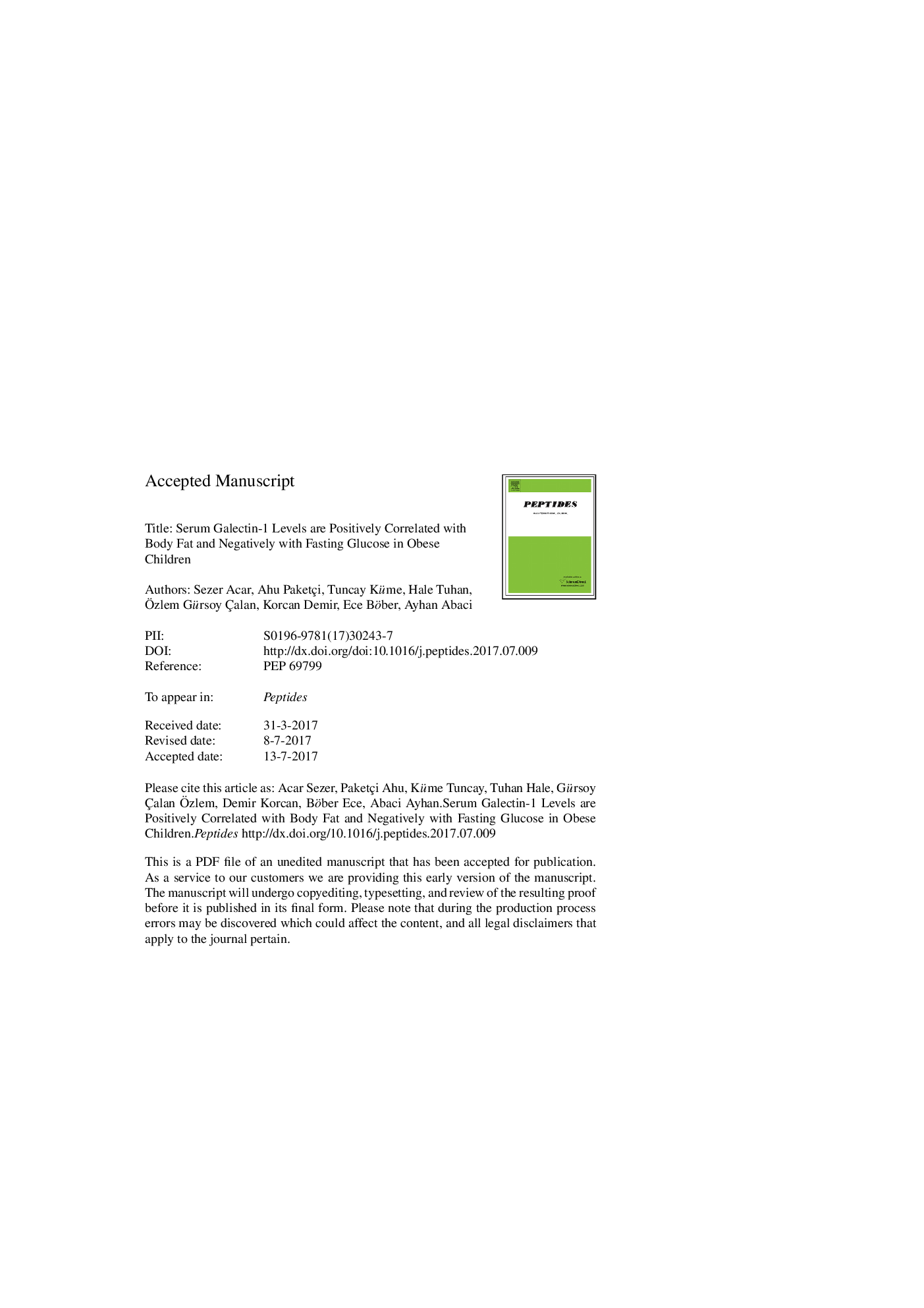| Article ID | Journal | Published Year | Pages | File Type |
|---|---|---|---|---|
| 5514622 | Peptides | 2017 | 31 Pages |
Abstract
Galectin-1, a recently identified peptide, is primarily released from the adipose tissue. Although galectin-1 was shown to have an anti-inflammatory effect, its specific function is not clearly understood. We aimed to evaluate the relationship of serum galectin-1 levels with clinical and laboratory parameters in childhood obesity. A total of 45 obese children (mean age: 12.1 ± 3.1 years) and 35 normal-weight children (mean age: 11.8 ± 2.2 years) were enrolled. Clinical [body mass index (BMI), waist circumference (WC), percentage of body fat and blood pressure] and biochemical [glucose, insulin, lipids, galectin-1, high-sensitive C-reactive protein (hsCRP) and leptin levels] parameters were assessed. Serum galectin-1, hsCRP and leptin levels were significantly higher in obese children than those in normal-weight children (12.4 vs 10.2 ng/mL, p < 0.001; 3.28 vs 0.63 mg/L, p < 0.001; 8.3 vs 1.2 ng/mL, p < 0.001, respectively). In obese children, galectin-1 levels correlated negatively with fasting glucose (r = â0.346, p = 0.020) and positively with fat mass (r = 0.326, p = 0.026) and WC standard deviation score (SDS) (r = 0.451, p = 0.002). The multivariate regression analysis demonstrated that serum galectin-1 levels were significantly associated with fasting glucose and WC SDS. This study showed that obese children had significantly higher galectin-1 levels in proportion to fat mass in obese cases than those in healthy children, which may be interpreted as a compensatory increase in an attempt to improve glucose metabolism.
Related Topics
Life Sciences
Biochemistry, Genetics and Molecular Biology
Biochemistry
Authors
Sezer Acar, Ahu Paketçi, Tuncay Küme, Hale Tuhan, Ãzlem Gürsoy Ãalan, Korcan Demir, Ece Böber, Ayhan Abacı,
